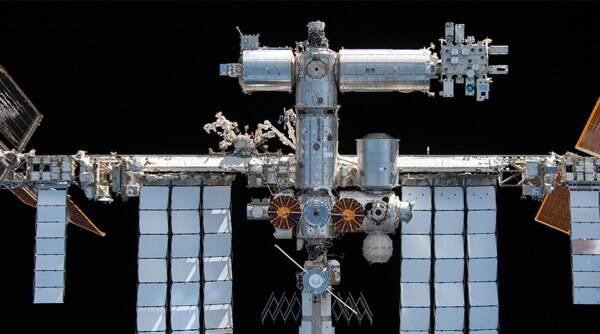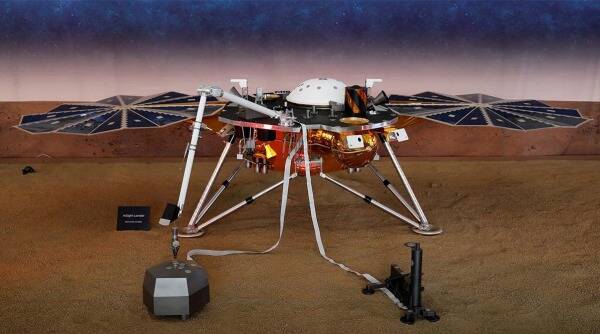Space news weekly recap: NASA’s UFO team, Martian bacteria and more
The word “space” may conjure up images of planets, stars and other heavenly bodies that are light-years away from us, but that is because we forget that “space” is just 100 kilometres above us at any given time. And things that happen in space can sometimes have a profound impact on life on Earth.
For example, a NASA instrument in space was able to detect many methane “super-emitters” on our planet. Methane is a potent greenhouse gas but compared to carbon dioxide, which lingers in the atmosphere for decades, methane lasts only decades in the atmosphere. This means that reducing methane emissions could produce more immediate impacts on climate change. Read about all that and more in our weekly space news recap.
NASA’S EMIT detects methane super emitters
NASA’s Earth Surface Mineral Dust Investigation, or EMIT, was mainly designed to study airborne dust and its effect on climate change but it has proven useful to detect a cause of climate change–detecting large “super-emitters” of methane from around the world.
According to Reuters, the device has identified more than 50 methane super-emitters in Central Asia, the Middle East and the Southwestern United States since it was installed on the International Space Station in July this year. Some of the methane hotspots discovered by the instrument were previously known while others were discovered for the first time. Examples of the super-emitters include oil and gas facilities and large landfills.
Subscriber Only Stories
 A picture of the International Space Station taken on November 8, 2021. (Image credit: NASA)
A picture of the International Space Station taken on November 8, 2021. (Image credit: NASA)
ISS swerves to avoid Russian debris
On November 21 last year, Russia conducted a “satellite defence test” where it shot down its own Cosmos 1408 satellite, in a move that was widely condemned by space agencies around the world. Earlier this week, NASA announced that the International Space Station (ISS) had to fire its thrusters for 5 minutes and 5 seconds to dodge the debris from the satellite.
“This evening, the International Space Station’s Progress 81 thrusters fired for 5 minutes, 5 seconds in a Pre-Determined Debris Avoidance Maneuver (PDAM) to provide the complex an extra measure of distance away from the predicted track of a fragment of Russian Cosmos 1408 debris,” said a statement from the American space agency.
Such anti-satellite tests are nothing new. The United States was the first country to conduct such a test in 1959 when satellites were fairly new technology and much rarer. Even India conducted an anti-satellite test in 2019 when it used a surface-to-air missile to bring down its own satellite.
Advertisement
 D. radiodurans (affectionately known as “Conan the Bacterium”) is particularly well-suited to surviving Mars’ harsh environment. (Image credit: Northwestern University)
D. radiodurans (affectionately known as “Conan the Bacterium”) is particularly well-suited to surviving Mars’ harsh environment. (Image credit: Northwestern University)
Bacteria under Martian surface
Researchers simulated the harsh ionising radiation on Mars in a new study where they found that ancient bacteria could potentially survive close to the surface of the planet much longer than previously thought. This means that scientists might even find bacteria and bacteria remains when the first samples from Mars come back to our planet.
To understand whether any lifeforms could survive the harsh climatic conditions on Mars, the research team exposed six different terrestrial bacteria and fungi under conditions similar to life on the red planet. They did this by freezing the microbes and hitting them with gamma rays and protons.
Not only did many of the terrestrial microorganisms prove that they might be able to survive on Mars, but one particular microbe, called Deinococcus radiodurans, seemed particularly well-suited to living on the planet. The researchers nicknamed the bacteria “Conan the bacterium” for its ability to survive massive amounts of radiation while frozen.
Advertisement
NASA’s UFO team
No, NASA is not “soft launching” aliens, but the agency has formed a new independent study to research “unidentified aerial phenomena.” (UAP.) UAP refers to the things in the night sky that cannot be identified as aircraft or some natural phenomena, or in simple words, UFOs.
The distant possibility of identifying alien spacecraft aside, identifying such UAPs has important national security and air safety implications for the United States. The study will not have access to any extensive set of data, and will also have no access to classified data. Due to this, its focus is only to inform the space agency about what data could be collected in the future to understand such phenomena better.
 The James Webb Space Telescope’s capture of the merging galaxies came as a surprise for the astronomer. (Image credit: ESA/WEBB, NASA & CSA, D. WYLEZALEK, A. VAYNER & THE Q3D TEAM, N. ZAKAMSKA.)
The James Webb Space Telescope’s capture of the merging galaxies came as a surprise for the astronomer. (Image credit: ESA/WEBB, NASA & CSA, D. WYLEZALEK, A. VAYNER & THE Q3D TEAM, N. ZAKAMSKA.)
Webb captures galaxies merging near black hole
In what researchers are calling an “unprecedented” surprise, the James Webb Space Telescope has captured crisp images of multiple galaxies merging around a supermassive black hole. According to Johns Hopkins University, this image offers an opportunity to “observe how billions of years ago galaxies coalesced into the modern universe.”
The rare “extremely red” quasar in the image is about 11.5 billion light-years old and has a supermassive black hole at its centre. It is red in colour because of the clouds of dust and gas between the Earth and the gas near the black hole.
 Sriharikota: Indian Space Research Organisation (ISRO)’s heaviest rocket LVM3-M2 lifts-off from a launch pad at the Satish Dhawan Space Centre, in Sriharikota, Sunday, Oct. 23, 2022. The rocket successfully placed 36 broadband communication satellites of OneWeb, on ISRO’s maiden commercial mission. (PTI Photo/R Senthil Kumar)
Sriharikota: Indian Space Research Organisation (ISRO)’s heaviest rocket LVM3-M2 lifts-off from a launch pad at the Satish Dhawan Space Centre, in Sriharikota, Sunday, Oct. 23, 2022. The rocket successfully placed 36 broadband communication satellites of OneWeb, on ISRO’s maiden commercial mission. (PTI Photo/R Senthil Kumar)
Gaganyaan test flight set for February
Human spaceflight is the pinnacle of the aspirations for any space agency and ISRO is no different. A senior official for the space agency told PTI that it will start a series of test flights for India’s maiden human space flight mission on February 23. The Gaganyaan Mission was announced by Prime Minister Modi during his Independence Day address in 2018 with a tentative target date of 2022.
Advertisement
But the pandemic caused several delays due to which the first Indian astronauts are likely to go on a spaceflight only by the end of 2024 or early 2025. “We have the capability to design, so we are doing that and that only is taking a little bit of time. We have completed all the designs and now is the time to prove that whatever has been designed is safe enough. That is the entire effort,” said R Umamaheshwaran, Director of ISRO’s Human Space Flight Centre, according to PTI.
 A life-size model of the spaceship Insight, NASA’s first robotic lander dedicated to studying the deep interior of Mars, is shown at Jet Propulsion Laboratory (JPL) in Pasadena, California, U.S. November 26, 2018. (Image credit: REUTERS/Mike Blake/File Photo)
A life-size model of the spaceship Insight, NASA’s first robotic lander dedicated to studying the deep interior of Mars, is shown at Jet Propulsion Laboratory (JPL) in Pasadena, California, U.S. November 26, 2018. (Image credit: REUTERS/Mike Blake/File Photo)
InSight rover nears end amidst Martian meteorite strike
NASA’s InSight lander has been parked on the surface of Mars since 2018 but now, the space agency says that it will run out of power and stop operations within four to eight weeks. In the meanwhile, the lander was able to detect a big meteor strike that gouged out large chunks of ice from close to the planet’s equator.
Advertisement
The lander’s solar panels have been accumulating dust over the past few years and this was made worse by a dust storm, which further depleted its batteries, according to NASA. InSight was designed to help reveal the internal structure of the planet and its seismic activity and originally had a planned duration of two years. It was later extended to four years and in a way, all the observations made since 2020 could be counted as “bonus science.”


